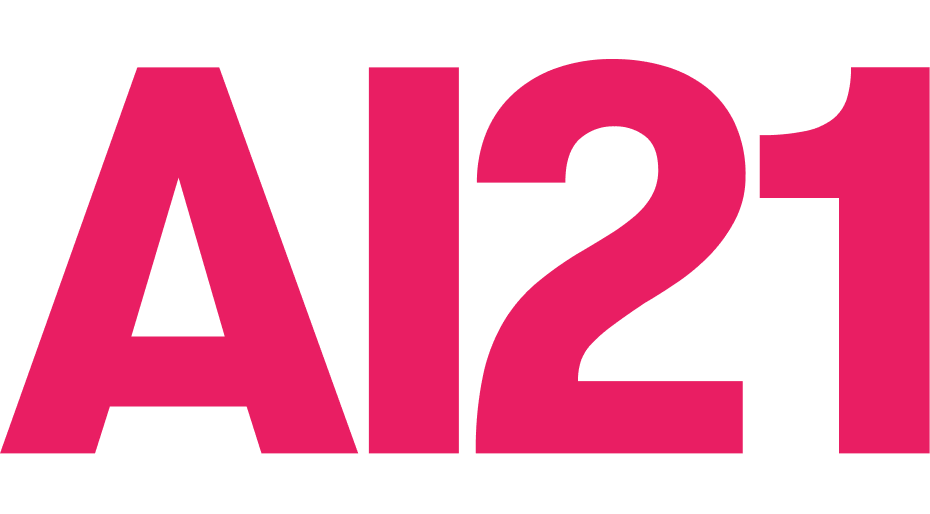Nova Micro vs. OpenChat 3.5 (1210)
Comparison between Nova Micro and OpenChat 3.5 (1210) across intelligence, price, speed, context window and more.
For details relating to our methodology, see our Methodology page.
Highlights
Model Comparison
| Metric |  Nova Micro Nova Micro |  OpenChat 3.5 (1210) OpenChat 3.5 (1210) | Analysis |
|---|---|---|---|
| Creator | |||
| Context Window | 130k tokens (~195 A4 pages of size 12 Arial font) | 8k tokens (~12 A4 pages of size 12 Arial font) | Nova Micro is larger than OpenChat 3.5 (1210) |
| Release Date | December, 2024 | December, 2023 | Nova Micro has a more recent release date than OpenChat 3.5 (1210) |
| Image Input Support | No | No | Neither Nova Micro nor OpenChat 3.5 (1210) have image input support |
| Open Source (Weights) | No | OpenChat 3.5 (1210) is open source while Nova Micro is proprietary |
Intelligence
Artificial Analysis Intelligence Index
Artificial Analysis Intelligence Index by Model Type
Artificial Analysis Intelligence Index by Open Weights vs Proprietary
Artificial Analysis Coding Index
Artificial Analysis Math Index
Intelligence Evaluations
Intelligence vs. Price
Intelligence vs. Output Speed
Intelligence vs. End-to-End Response Time
- Input time: Time to receive the first response token
- Thinking time (only for reasoning models): Time reasoning models spend outputting tokens to reason prior to providing an answer. Amount of tokens based on the average reasoning tokens across a diverse set of 60 prompts (methodology details).
- Answer time: Time to generate 500 output tokens, based on output speed
Context Window
Context Window
Intelligence vs. Context Window
Pricing
Pricing: Input and Output Prices
Pricing: Cached Input Prompts
Pricing: Image Input Pricing
Performance Summary
Output Speed vs. Price
Latency vs. Output Speed
Speed
Measured by Output Speed (tokens per second)
Output Speed
Output Speed by Input Token Count (Context Length)
Output Speed Variance

Output Speed, Over Time
Latency
Measured by Time (seconds) to First Token
Latency: Time To First Answer Token
Latency: Time To First Token
Time to First Token by Input Token Count (Context Length)
Time to First Token Variance

Time to First Token, Over Time
End-to-End Response Time
Seconds to output 500 Tokens, calculated based on time to first token, 'thinking' time for reasoning models, and output speed
End-to-End Response Time
- Input time: Time to receive the first response token
- Thinking time (only for reasoning models): Time reasoning models spend outputting tokens to reason prior to providing an answer. Amount of tokens based on the average reasoning tokens across a diverse set of 60 prompts (methodology details).
- Answer time: Time to generate 500 output tokens, based on output speed
End-to-End Response Time by Input Token Count (Context Length)
End-to-End Response Time, Over Time
- Input time: Time to receive the first response token
- Thinking time (only for reasoning models): Time reasoning models spend outputting tokens to reason prior to providing an answer. Amount of tokens based on the average reasoning tokens across a diverse set of 60 prompts (methodology details).
- Answer time: Time to generate 500 output tokens, based on output speed
Comparisons to Nova Micro
GPT-4o (Nov '24)
GPT-4o mini
o1-pro
o3-mini (high)
Llama 3.3 Instruct 70B
Llama 3.1 Instruct 8B
Gemini 2.0 Flash (Feb '25)
Gemma 3 27B Instruct
Gemini 2.5 Pro Experimental (Mar' 25)
Claude 3.7 Sonnet (Extended Thinking)
Claude 3.7 Sonnet (Standard)
 Mistral Large 2 (Nov '24)
Mistral Large 2 (Nov '24) Mistral Small 3.1
Mistral Small 3.1 DeepSeek R1
DeepSeek R1 DeepSeek V3 0324 (Mar' 25)
DeepSeek V3 0324 (Mar' 25)Grok 3
Grok 3 Reasoning Beta
 Nova Pro
Nova Pro Command A
Command AQwQ 32B
 DeepSeek V3 (Dec '24)
DeepSeek V3 (Dec '24)GPT-4o (March 2025, chatgpt-4o-latest)
Comparisons to OpenChat 3.5
GPT-4o (Nov '24)
GPT-4o mini
o1-pro
o3-mini (high)
Llama 3.3 Instruct 70B
Llama 3.1 Instruct 8B
Gemini 2.0 Flash (Feb '25)
Gemma 3 27B Instruct
Gemini 2.5 Pro Experimental (Mar' 25)
Claude 3.7 Sonnet (Extended Thinking)
Claude 3.7 Sonnet (Standard)
 Mistral Large 2 (Nov '24)
Mistral Large 2 (Nov '24) Mistral Small 3.1
Mistral Small 3.1 DeepSeek R1
DeepSeek R1 DeepSeek V3 0324 (Mar' 25)
DeepSeek V3 0324 (Mar' 25)Grok 3
Grok 3 Reasoning Beta
 Nova Pro
Nova Pro Nova Micro
Nova Micro Command A
Command AQwQ 32B
 DeepSeek V3 (Dec '24)
DeepSeek V3 (Dec '24)GPT-4o (March 2025, chatgpt-4o-latest)
Models compared: OpenAI: GPT 4o Audio, GPT 4o Realtime, GPT 4o Speech Pipeline, GPT-3.5 Turbo, GPT-3.5 Turbo (0125), GPT-3.5 Turbo (0314), GPT-3.5 Turbo (1106), GPT-3.5 Turbo Instruct, GPT-4, GPT-4 Turbo, GPT-4 Turbo (0125), GPT-4 Turbo (1106), GPT-4 Vision, GPT-4.5 (Preview), GPT-4o (Aug '24), GPT-4o (ChatGPT), GPT-4o (March 2025), GPT-4o (May '24), GPT-4o (Nov '24), GPT-4o Realtime (Dec '24), GPT-4o mini, GPT-4o mini Realtime (Dec '24), o1, o1-mini, o1-preview, o1-pro, o3, o3-mini, and o3-mini (high), Meta: Code Llama 70B, Llama 2 Chat 13B, Llama 2 Chat 70B, Llama 2 Chat 7B, Llama 3 70B, Llama 3 8B, Llama 3.1 405B, Llama 3.1 70B, Llama 3.1 8B, Llama 3.2 11B (Vision), Llama 3.2 1B, Llama 3.2 3B, Llama 3.2 90B (Vision), and Llama 3.3 70B, Google: Gemini 1.0 Pro, Gemini 1.5 Flash (May), Gemini 1.5 Flash (Sep), Gemini 1.5 Flash-8B, Gemini 1.5 Pro (May), Gemini 1.5 Pro (Sep), Gemini 2.0 Flash, Gemini 2.0 Flash (exp), Gemini 2.0 Flash Thinking exp. (Dec '24), Gemini 2.0 Flash Thinking exp. (Jan '25), Gemini 2.0 Flash-Lite (Feb '25), Gemini 2.0 Flash-Lite (Preview), Gemini 2.0 Pro Experimental, Gemini 2.5 Pro Experimental, Gemini Experimental (Nov), Gemma 2 27B, Gemma 2 9B, Gemma 3 12B, Gemma 3 1B, Gemma 3 27B, Gemma 3 4B, and Gemma 7B, Anthropic: Claude 2.0, Claude 2.1, Claude 3 Haiku, Claude 3 Opus, Claude 3 Sonnet, Claude 3.5 Haiku, Claude 3.5 Sonnet (June), Claude 3.5 Sonnet (Oct), Claude 3.7 Sonnet Thinking, Claude 3.7 Sonnet, and Claude Instant, Mistral: Codestral (Jan '25), Codestral (May '24), Codestral-Mamba, Ministral 3B, Ministral 8B, Mistral 7B, Mistral Large (Feb '24), Mistral Large 2 (Jul '24), Mistral Large 2 (Nov '24), Mistral Medium, Mistral NeMo, Mistral Saba, Mistral Small (Feb '24), Mistral Small (Sep '24), Mistral Small 3, Mistral Small 3.1, Mixtral 8x22B, Mixtral 8x7B, Pixtral 12B, and Pixtral Large, DeepSeek: DeepSeek Coder V2 Lite, DeepSeek LLM 67B (V1), DeepSeek R1, DeepSeek R1 (FP4), DeepSeek R1 Distill Llama 70B, DeepSeek R1 Distill Llama 8B, DeepSeek R1 Distill Qwen 1.5B, DeepSeek R1 Distill Qwen 14B, DeepSeek R1 Distill Qwen 32B, DeepSeek V3 (Dec '24), DeepSeek V3 (Mar' 25), DeepSeek-Coder-V2, DeepSeek-V2, DeepSeek-V2.5, DeepSeek-V2.5 (Dec '24), DeepSeek-VL2, and Janus Pro 7B, Perplexity: PPLX-70B Online, PPLX-7B-Online, R1 1776, Sonar, Sonar 3.1 Huge, Sonar 3.1 Large, Sonar 3.1 Small , Sonar Large, Sonar Pro, Sonar Reasoning, Sonar Reasoning Pro, and Sonar Small, xAI: Grok 2, Grok 3, Grok 3 Reasoning Beta, Grok 3 mini, Grok 3 mini Reasoning, Grok Beta, and Grok-1, OpenChat: OpenChat 3.5, Amazon: Nova Lite, Nova Micro, and Nova Pro, Microsoft Azure: Phi-3 Medium 14B, Phi-3 Mini, Phi-4, Phi-4 Mini, and Phi-4 Multimodal, Liquid AI: LFM 1.3B, LFM 3B, and LFM 40B, Upstage: Solar Mini, Solar Pro, and Solar Pro (Nov '24), Databricks: DBRX, MiniMax: MiniMax-Text-01, NVIDIA: Cosmos Nemotron 34B, Llama 3.1 Nemotron 70B, Llama 3.3 Nemotron Nano 8B v1, Llama 3.3 Nemotron Nano 8B v1 (Reasoning), Llama 3.3 Nemotron Super 49B v1, and Llama 3.3 Nemotron Super 49B v1 (Reasoning), IBM: Granite 3.0 2B, OpenVoice: Granite 3.0 8B, Inceptionlabs: Mercury Coder Mini, Mercury Coder Small, and Mercury Instruct, Reka AI: Reka Core, Reka Edge, Reka Flash (Feb '24), Reka Flash, and Reka Flash 3, Other: LLaVA-v1.5-7B, Cohere: Aya Expanse 32B, Aya Expanse 8B, Command, Command A, Command Light, Command R7B, Command-R, Command-R (Mar '24), Command-R+ (Apr '24), and Command-R+, AI21 Labs: Jamba 1.5 Large, Jamba 1.5 Large (Feb '25), Jamba 1.5 Mini, Jamba 1.5 Mini (Feb 2025), Jamba 1.6 Large, Jamba 1.6 Mini, and Jamba Instruct, Snowflake: Arctic, Alibaba: QwQ-32B, QwQ 32B-Preview, Qwen Chat 72B, Qwen Plus, Qwen Turbo, Qwen1.5 Chat 110B, Qwen1.5 Chat 14B, Qwen1.5 Chat 32B, Qwen1.5 Chat 72B, Qwen1.5 Chat 7B, Qwen2 72B, Qwen2 Instruct 7B, Qwen2 Instruct A14B 57B, Qwen2-VL 72B, Qwen2.5 Coder 32B, Qwen2.5 Coder 7B , Qwen2.5 Instruct 14B, Qwen2.5 Instruct 32B, Qwen2.5 72B, Qwen2.5 Instruct 7B, Qwen2.5 Max, Qwen2.5 Max 01-29, Qwen2.5 VL 72B, and Qwen2.5 VL 7B, and 01.AI: Yi-Large.









 Sonar
Sonar
 Phi-4
Phi-4
 LFM 40B
LFM 40B
 Solar Mini
Solar Mini
 DBRX Instruct
DBRX Instruct
 MiniMax-Text-01
MiniMax-Text-01
 Llama 3.1 Nemotron Instruct 70B
Llama 3.1 Nemotron Instruct 70B
 Llama 3.1 Tulu3 405B
Llama 3.1 Tulu3 405B
 Reka Flash (Sep '24)
Reka Flash (Sep '24)

 Jamba 1.5 Large
Jamba 1.5 Large
 Arctic Instruct
Arctic Instruct

 Yi-Large
Yi-Large